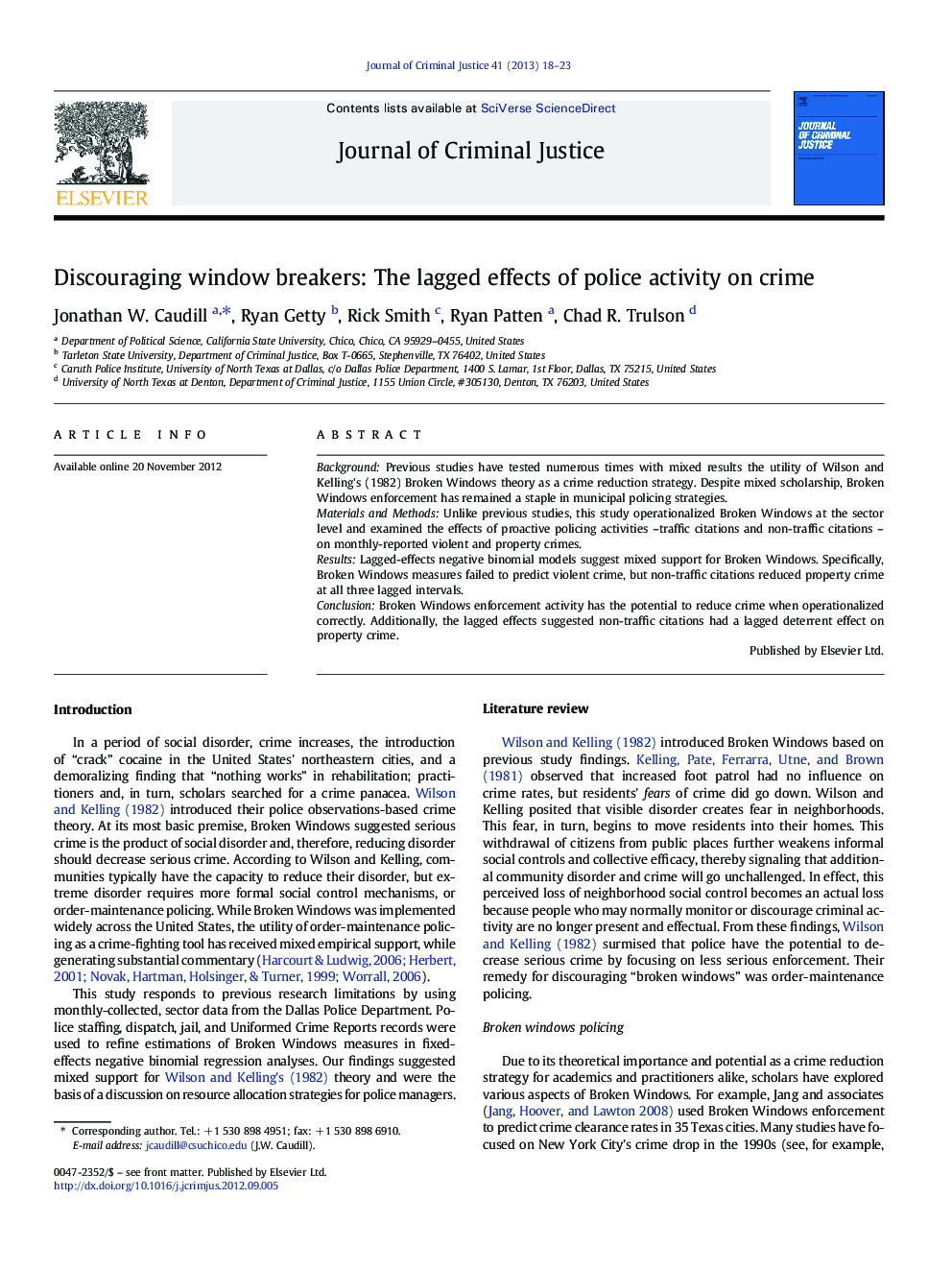| Article ID | Journal | Published Year | Pages | File Type |
|---|---|---|---|---|
| 882755 | Journal of Criminal Justice | 2013 | 6 Pages |
BackgroundPrevious studies have tested numerous times with mixed results the utility of Wilson and Kelling's (1982) Broken Windows theory as a crime reduction strategy. Despite mixed scholarship, Broken Windows enforcement has remained a staple in municipal policing strategies.Materials and MethodsUnlike previous studies, this study operationalized Broken Windows at the sector level and examined the effects of proactive policing activities –traffic citations and non-traffic citations – on monthly-reported violent and property crimes.ResultsLagged-effects negative binomial models suggest mixed support for Broken Windows. Specifically, Broken Windows measures failed to predict violent crime, but non-traffic citations reduced property crime at all three lagged intervals.ConclusionBroken Windows enforcement activity has the potential to reduce crime when operationalized correctly. Additionally, the lagged effects suggested non-traffic citations had a lagged deterrent effect on property crime.
► This study provided mixed support for Broken Windows-based order maintenance policing. ► Order-maintenance policing failed to reduce significantly violent crime over a 26-month period. ► One measure of order-maintenance policing – non-traffic citations – significantly reduced reported property crimes.
